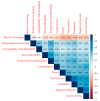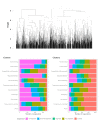Reported Acquisition Practices of Australian Dog Owners
- PMID: 31861150
- PMCID: PMC6940985
- DOI: 10.3390/ani9121157
Reported Acquisition Practices of Australian Dog Owners
Abstract
In Australia, the UK and the US dog ownership is prevalent with an estimated 40% of Australian households, 25% of UK households, and 50% of US households owning a dog. Once acquired, a dog usually becomes a family companion so, unlike a faulty product, it can rarely be returned or resold without some emotional impact on both the acquirer and the dog. Regarding the reality of dog relinquishment, there is a growing need for cross-disciplinary research that considers how dog owners are making their acquisition choices and, if prioritising different attributes, leads to more optimal acquisition choices. This research collected data from 2840 dog owners via an online survey and examines how owners prioritised various attributes when acquiring their latest dog. The Pearson-Blotchky analysis of survey results show owners are split into two groups, with each group prioritising different attributes or characteristics in their search for a new dog. The first group are those dog owners who prioritised: the ability to rescue a dog, how compatible the dog was on the first meeting, and how compatible they believed the dog would be with their household. The second group are those owners who prioritised: a dog's morphology, temperament predictability, and breeding practices. While each group prioritised different attributes, neither group made substantially more optimal acquisition choices in terms of overall satisfaction with the dog that they ultimately selected.
Keywords: acquisition; canine; dog; priorities; purchase.
Conflict of interest statement
The authors declare no conflict of interest.
Figures



References
-
- Insurance Information Institute. [(accessed on 6 September 2019)]; Available online: https://www.iii.org/fact-statistic/facts-statistics-pet-statistics.
-
- Carter S.B. Why planning limits its concerns: A case study of planning for dogs in Melbourne, Australia. Aust. Plan. 2016;53:251–259. doi: 10.1080/07293682.2016.1210658. - DOI
-
- Pet Food Manufacturers’ Association (PFMA) Pet Population. [(accessed on 10 October 2019)];2019 Available online: https://www.pfma.org.uk/pet-population-2019.
-
- White S. Companion Animals: Members of the family or legally discarded objects? UNSW Law J. 2009;32:852–878.
-
- King T., Marston L.C., Bennett P.C. Describing the ideal Australian companion dog. Appl. Anim. Behav. Sci. 2009;120:84–93. doi: 10.1016/j.applanim.2009.04.011. - DOI
LinkOut - more resources
Full Text Sources

